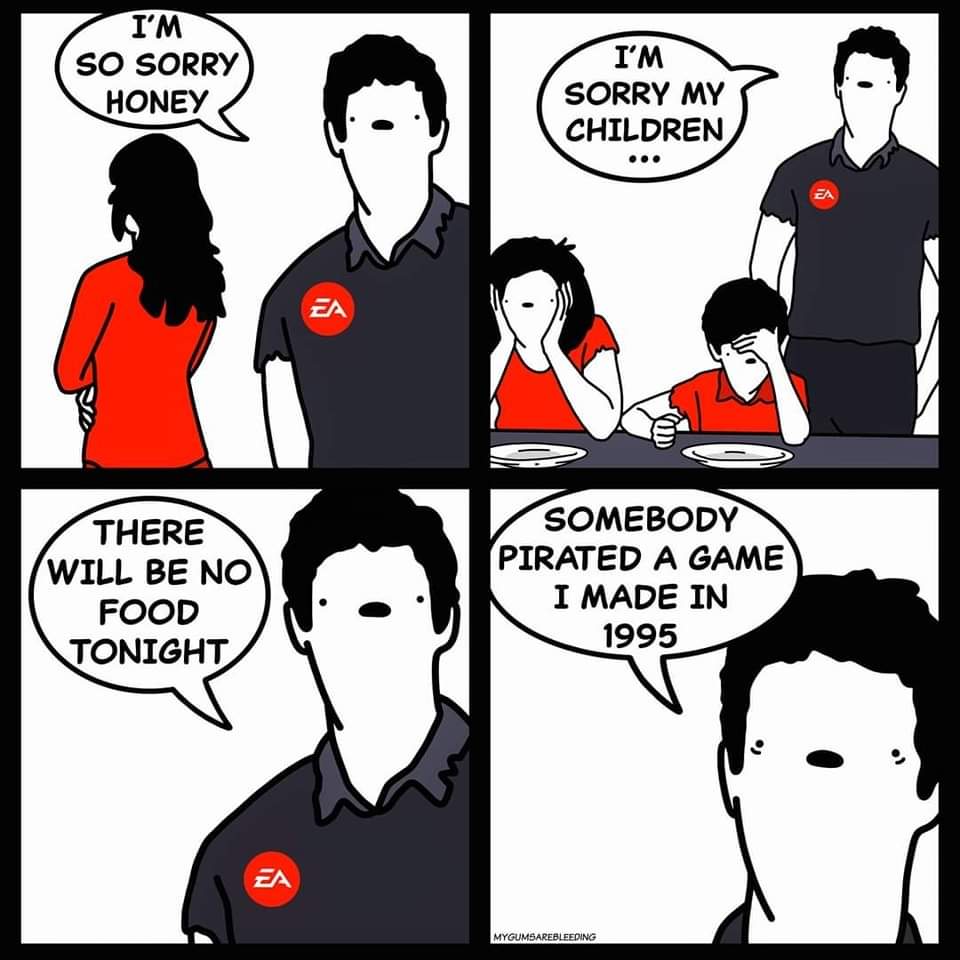this post was submitted on 21 Sep 2023
2322 points (97.9% liked)
Comic Strips
14948 readers
2168 users here now
Comic Strips is a community for those who love comic stories.
The rules are simple:
- The post can be a single image, an image gallery, or a link to a specific comic hosted on another site (the author's website, for instance).
- The comic must be a complete story.
- If it is an external link, it must be to a specific story, not to the root of the site.
- You may post comics from others or your own.
- If you are posting a comic of your own, a maximum of one per week is allowed (I know, your comics are great, but this rule helps avoid spam).
- The comic can be in any language, but if it's not in English, OP must include an English translation in the post's 'body' field (note: you don't need to select a specific language when posting a comic).
- Politeness.
- Adult content is not allowed. This community aims to be fun for people of all ages.
Web of links
- [email protected]: "I use Arch btw"
- [email protected]: memes (you don't say!)
founded 2 years ago
MODERATORS
you are viewing a single comment's thread
view the rest of the comments
view the rest of the comments

I mean. Ya kinda do. A broken receiver isn’t going to make the gun explode in your hand, it’s just going to cease being functional.
More importantly, the issue with small defects is sidestepped by good engineering and process control. Your statement applies to almost every sort of manufacturing. All materials have internal defects and a range of potential material properties. You account for this by applying a safety factor so that the design stresses are well below the nominal material properties. For a material with higher uncertainty on the properties you simply apply a higher safety factor
That’s why many 3d printed guns look like bricks when an injection molded receiver would be much more sleek in comparison.
Home built cars have been a thing pretty much since the start of the automobile. People who home-build cars don’t typically build their own drivetrain. It’s just not worth the effort when donor engines from wrecked cars can be had cheaply and easily.
Usually the DIY fabrication work involves building the chassis, suspension components, body panels, etc. As I pointed out, you wouldn’t just print the chassis. You’d use printed parts as jigs to align the welds, build mold for composite pieces, etc.
Nobody is going to be printing a complete car in the conceivable future, but 3d printing can absolutely help you build a good and reliable car from conventional materials with greatly reduced effort and tooling costs.